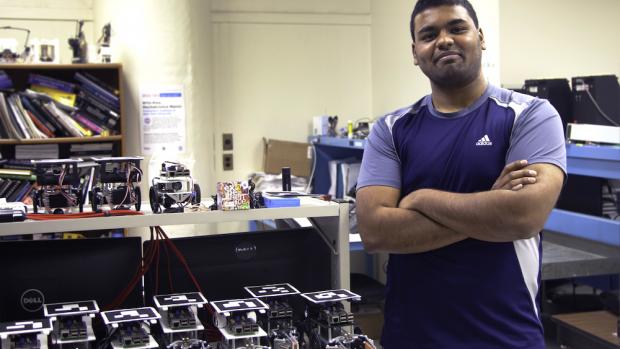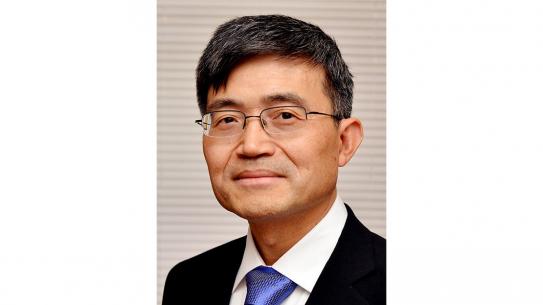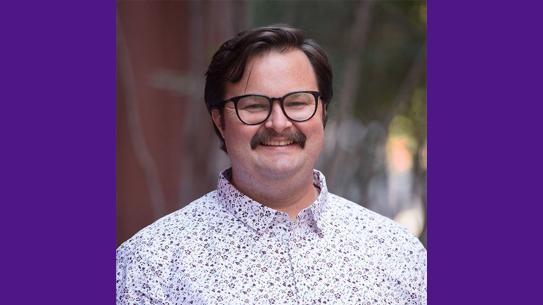The Marvels of Mechatronics

NYU Tandon is quickly becoming a hub for mechatronics, a multidisciplinary field that combines mechanical engineering, electrical engineering, informatics, and sensors with computer control throughout the entire design process. The word was first coined by Japanese engineers in the 1960s, and since then, mechatronic engineers have made enormous contributions to the automotive industry (anti-lock brakes, hybrid powertrains), the medical field (robotic surgical tools), military defense (motion-controlled sighting systems), and numerous other areas.
Because they work on developing products and systems that are essentially mechanical but that cannot operate optimally without electrical and computer controls, mechatronics engineers must have a deep understanding of mechanics, electronics, computer science, and more.
Sai Prasanth Krishnamoorthy was one of the first to earn his degree in Tandon’s newly launched mechatronics master’s program, and he recently embarked upon his doctoral studies, continuing his explorations in the mechatronics lab.
“I had originally planned to get my master’s degree in electrical engineering,” he explains. “I’ve always had an interest in robotics, however, and one day I visited the mechatronics lab and was hooked.” He continued, “I started my research by making small contributions to ongoing projects when Professor Vikram Kapila, who runs the lab, challenged me to build a walking robot. The experience I gained from this task helped in identifying my research interests and gave me the confidence to undertake more advanced projects. Most importantly, I was also given the chance to explore how mechatronics projects can be used in K-12 STEM education, because Professor Kapila and others in the department are very active proponents of Tandon’s K-12 initiatives.”
Krishnamoorthy is currently working on a fleet of small robotic vehicles that he is using to study human-robot interaction and how it can be streamlined. “The goal is to be able to control them remotely via smartphone or tablet with a simple app,” he says. “Ultimately, we want them to perform autonomously, which will require AI.”
The master’s program is specifically designed to produce engineers who can help fulfill a market for consumer and business robots that is expected to reach $1.5 billion by the end of the decade, and grads who have studied mechatronics at Tandon have gone on to fulfilling jobs at Siemens, Verizon, and other major companies. While Krishnamoorthy feels the pull of industrial and entrepreneurial pursuits, he foresees remaining in academia. “I feel a commitment to my research,” he asserts. “Mechatronics can make an enormous positive difference in the lives of the elderly, who could take advantage of robotic assistive devices; children with autism or other conditions, who could benefit from interacting with humanoid robots; and many other populations.”




